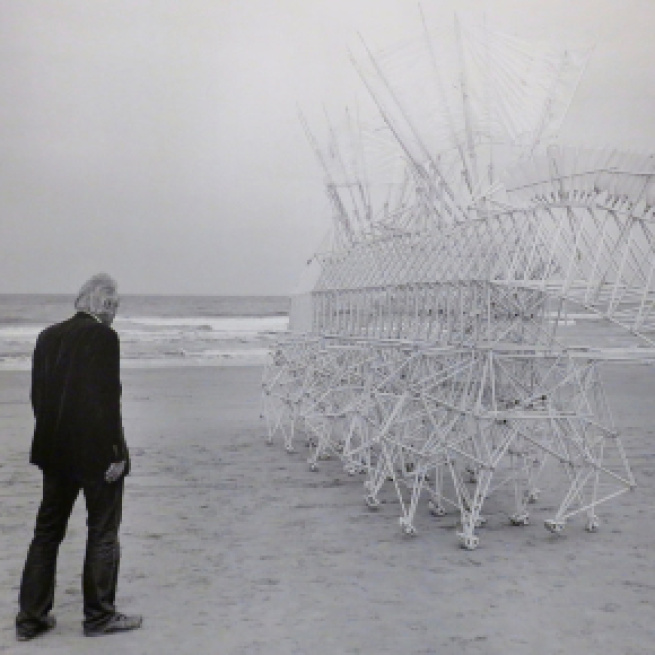In order to cope with the extreme climate of Venus, the NASA scientists are taking inspiration from Dutch artist Theo Jansen’s “Strandbeest”, which are able to move without the aid of electronic mechanisms. This is not the first time technology took inspiration from art or nature to create astonishing combinations of power and beauty.
The gigantic Sand Beasts
Theo Jansen is a Dutch artist whose exhibitions have been exposed all over the world, from London to Taipei and from Chicago to Madrid. Jansen firstly studied physics at the University of Delft but left in 1974 without graduating.
In 1990, the “Strandbeest” project was born, as he started building these enormous mechanisms made out of yellow plastic tubes. These "Sand Beasts" were conceived as a fusion between engineering and art, whose separation, as Jansen himself once said, exists only in our minds.
The sand beasts, which look like massive skeletons, are able to move autonomously, by walking the winds. The beasts are also provided with an increasingly sophisticated AI, which permits them to avoid obstacles such as the sea. Janson perceives his creatures as new forms of life and aims to improve their resilience to the natural elements, such as storms and water. The artist’s final objective is to set his creations free on the beaches and let them live their own life.
Sand Beasts inspired NASA space probes
On Venus electronic automata can only last for a few hours, even in the most robust spacecraft, due to the planet’s forbidding climate. In fact, the atmosphere of Venus has average temperatures around 450°C, sulfuric acid clouds, and a crushing surface pressure.
Jonathan Sauder, an engineer at the nasa Jet Propulsory Laboratory, understood that the solution may be getting rid of the electronics altogether to create an Automaton Rover for Extreme Environments (AREE). To design this space probe, Sauder took inspiration from Theo Jansen’s Sand Beasts, which move only thanks to mechanical sensors and the power of winds.
NASA is trying to adopt similar mechanisms for its AREE.
The spacecraft’s legs will be controlled by a fully mechanical computer, powered, as Jansen’s ones, using wind turbines. Furthermore, the space probes will be completely pre-programmed as it will not be possible to manoeuvre them from the distance. The plan is to send the spacecraft to the planet’s surface, where it will collect and analyse geologic samples and then send the results back. The way to transmit the results to the orbital space station without the support of electronic equipment is one of the major difficulties for Sauder and his team. To solve the problem, the space probe will have a rising and falling radar reflector piston, whose reflection will appear in the Orbital Space Station’s radar as a bright spot. By covering and uncovering the piston, which is a sort of mirror, the space probe will be able to transmit messages to the orbital station using the Morse code.


